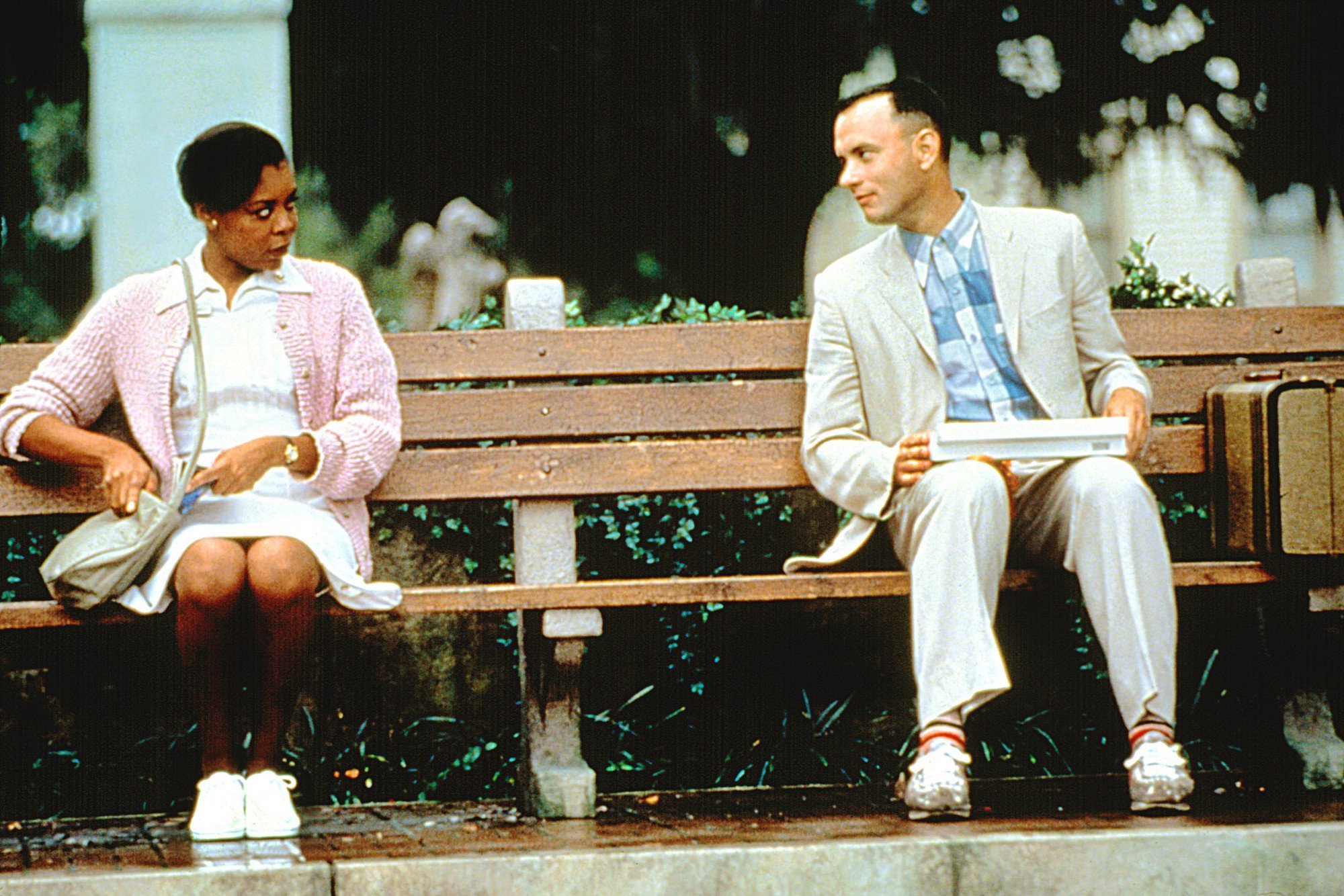- 1994 Was A Very Good Year For Film & Television (Part 1)
- 1994 Was A Very Good Year For Film & Television (Part 2)
Thirty years is a long time in cinema. 1994 was the time of massive cultural influence across the globe. There was grunge music, MTV, blockbusters, and political upheaval.
1994 brought forward a new wave of film and television expression including:
- Politics: A New Tonality
- Killers In Abstract
- Based On
- Happy Endings
- Social Media – Nope
April 1994. Kurt Cobain is dead. And with his passing an entire movement called grunge seemingly began to unravel. Sheryl Crow’s All I Wanna Do became an anthem for those tired of stressing over their lives and dismal world events. Two hit songs from the movie The Lion King starring Jeremy Irons and Matthew Broderick, to this date still the number one animated film from 1994, were racing up the charts and neither had any negative vibes. Inside Out 2 has since surpassed The Lion King and taken the box office crown.
If you buy into the premise that music and movies more than anything else reflect our current culture, then 1994 was producing positive cultural waves like nothing else. And setting box office record along the way.
Politics: A New Tonality
By the time Bill Clinton became president in 1993, many films reflecting the anger in the world were in production or pre-production. But the old Soviet Union (U.S.S.R.) had broken up and the Berlin Wall was taken down. Clinton’s campaign song was the joyous earworm by Fleetwood Mac, “Don’t Stop.”
Don’t stop thinking about tomorrow
Don’t stop, it’ll soon be here
It’ll be better than before
Yesterday’s gone, yesterday’s gone
In case you’re wondering what 1993 has to do with anything in the movies of 1994, unless you’re working for an independent film company with limited budgets and time constraints, many films take at least a year to produce. The Lion King released in 1994 had a complete rewrite of its script in 1991. It took three years to be released in the theaters on account of global events during the 90s.
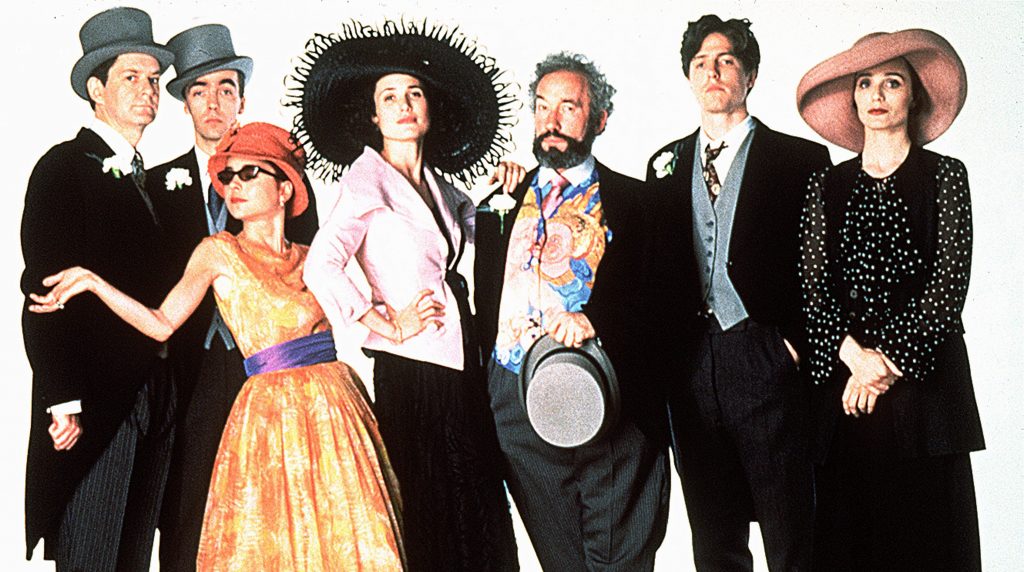
Main cast in Four Weddings and a Funeral. Photo courtesy of Working Title/ Channel 4
In the early 90s, movies were already transitioning to those stories which reflected a hopeful tonality. The Lion King, Forrest Gump, and Four Weddings and a Funeral swept the award shows. 1994 had the biggest box offices in film history with nine movies over earning over 100 million dollars and 1.2 billion people in attendance. People go to the movies to either escape or celebrate. It soon became clear that the mood of the country was becoming hugely positive and audiences flocked to theaters to celebrate.
The world felt happier, less tense. Nelson Mandella had been released from prison in South Africa and won the presidency. For decades the cold war had raged with only detente to save us from potential nuclear war. Now, on the heels of the breakdown of the old Soviet Union, Yeltsin was offering nuclear concessions after Gorbachev had given us Glasnost. Yeltsin and President Clinton signed the nuclear accords which mandated that the two sides stop aiming nukes at each other.
It seemed like the entire world had completely changed almost overnight. We went to bed with the evil empire and woke up with daisies in gun barrels. It was like the dawning of a new age of Aquarius. Movies like Ace Ventura: Pet Detective, Reality Bites,”and The Chase showed us the way to laughter and joy to reflect what we were feeling.
Abstracted Killers
Movies that purported to be about evil really weren’t – not like in the previous decades – because these films were so abstracted. Who can take Quentin Tarantino’s Pulp Fiction seriously? There was violence but it was cartoon violence. A gun wielded by a so-called professional hitman accidentally going off in a car and blowing someone’s head off? A shot of adrenaline in the heart that has a dead woman popping up like a zombie character, suddenly alive and well? “Get the geek?” Not exactly terrifying. Some might argue “stylized humor.”
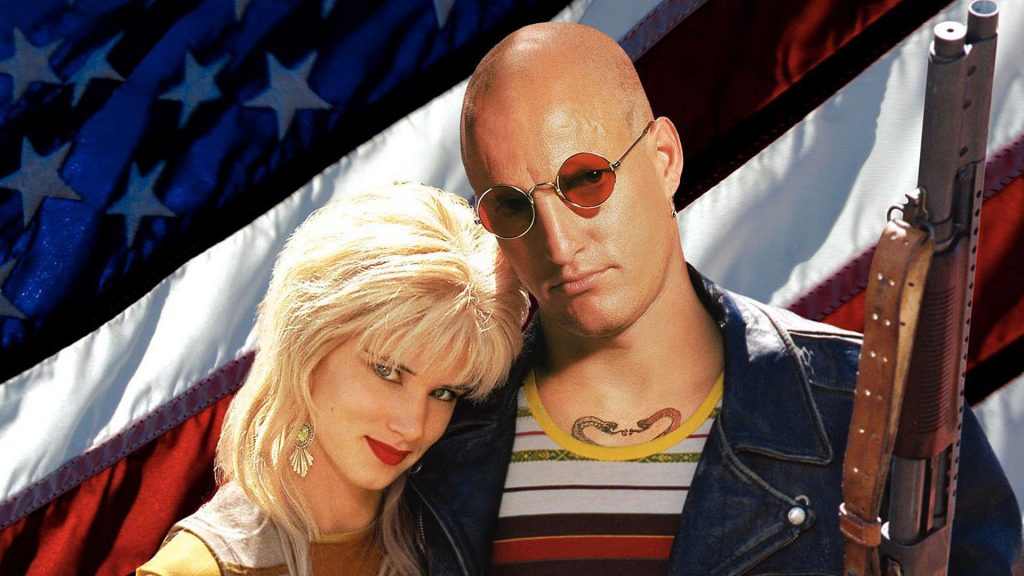
Mallory (Juliette Lewis) & Mickey Knox (Woody Harrelson) in Natural Born Killers. Photo courtesy of Warner Bros.
Even Natural Born Killers directed by Oliver Stone never took itself that seriously. The Getaway starring Alec Baldwin and Kim Basinger, Class of 1999: Part II – all absurd situations and killers. There are decades where movies made you squirm and you walked out of a screening depressed and anxious. These movies in ‘94 were not that.
We were riding a high of hope and joy and like our music, our movies reflected our culture. What had started out as a grim reality of the world at the beginning of the decade had began to shift to a more benign form of entertainment as the world took a deep breath and said, ”Eff it – let’s party.”
Even the re-release of a film considered the best of any era, Midnight Cowboy couldn’t gain much box office traction in this revisionist world that valued abstracted reality and fun over fear and misery. Midnight Cowboy is unremitting real, grim, and has a tearfully tragic ending. Audiences in the hope and joy era of the mid-90’s weren’t having it.
A re-release that did do well was Dr. Strangelove based on the novel Red Alert, a satire of global politics.
Speaking of abstracted material let’s look at an excerpt from the screenplay for Dr. Strangelove.
A struggle begins between DeSadeski and Turdison.
MUFFLEY
Gentleman, you can’t fight in here!
This is the War Room!
Oh, the irony! Only a few years later we’d be stunned by the events of 9-11, but for now we loved life, saw a hopeful future, and our movies reflected that.
Based On
An odd feature of films (successful ones) from 1994 is that many are based on previous material.
Shawshank Redemption, Forrest Gump, Interview With a Vampire, Once Were Warriors, Death and the Maiden, Legends of the Fall, Clear and Present Danger, The Lion King, The Shadow, Angels in the Outfield (a remake), True Lies (based on a French film), The Client, Black Beauty, and on and on. Dozens of other films (at least 55 by my count) of that year were based on books or something besides original concepts.
Why was this?
Why anything in Hollywood? Money. The movie industry always knew they needed audiences – that’s nothing new – but this overwhelming propensity to find a book or news article and turn it into a movie was exploding.
Perhaps Michael Crichton was more than partially responsible for this. His books were like paper movies: easy to adapt to the screen. He was prolific and his concepts creative churning out hit and hit.
Westworld, Coma, Runaway, Disclosure, The Andromeda Strain, and of course in later years, Jurassic Park, and Sphere. (Technically Jurassic Park was releasd in 1993, but it’s such a classic movie from the era). Over thirty-six films from 1971 until his death in 2008. Talk about an audience: his books have sold over two hundred million copies.
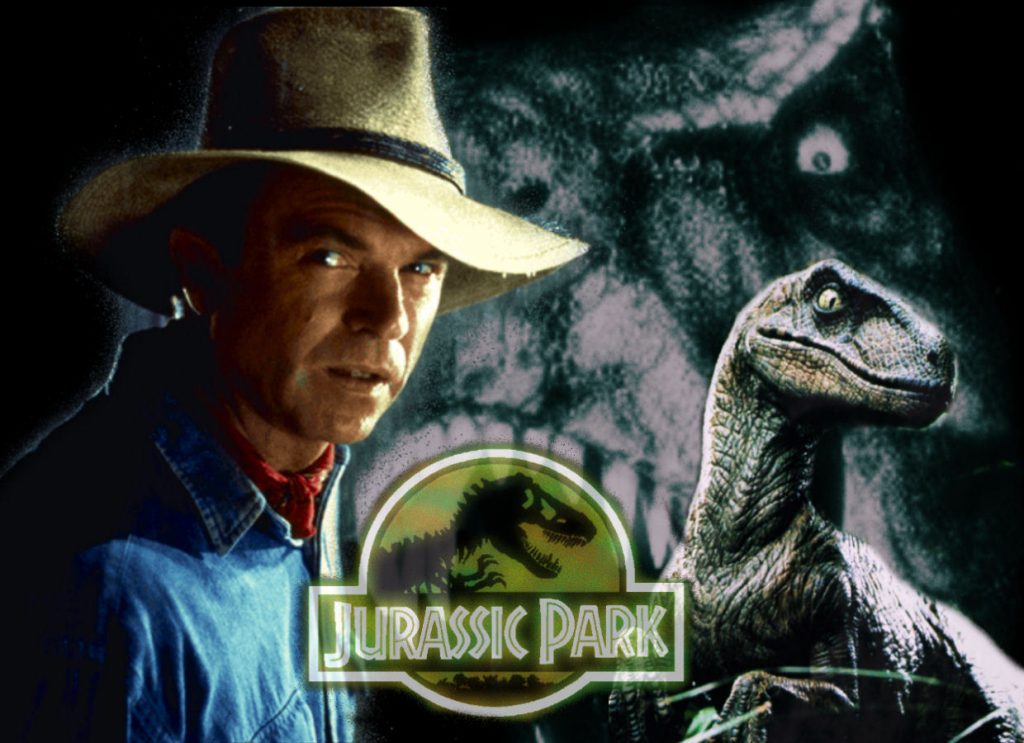
Alan Grant (Sam Neil) Photo courtesy of Universal Studios
Hollywood is nothing if not derivative. The execs in those buildings pay attention to trends – it’s their job. If books to screen are winners, then let’s all do it. And they did.
There weren’t box office algorithms in 1994 per se, at least not like we have now. But the tick of dollars from audiences who were familiar with the source material and came to films because of it, was underway. Producers and studios paid attention and hedged their speculative film bets.
The Golden 90s
Cable, but not streaming, was beginning to deliver movies as part of their services. Most of these did not have much of an impact on the box office, but there was a robust B-movie industry underway. Many dozens of indie film production companies produced movies for their own distribution but more importantly they also fed outlets like HBO and Showtime.
It was a wide-open feeding frenzy though with many companies doing both theatrical releases and B-movies on TV at the same time. Movies were king no matter where or how they were released. There was a hunger for film unmatched in Hollywood history.
In general, the creative energies were just off the chart. Many upcoming writers eschewed the crowded film market for television as show like Friends (10 seasons) and ER (15 seasons) were born. The water coolers were in full throat with discussions on the creative forces being released into media.
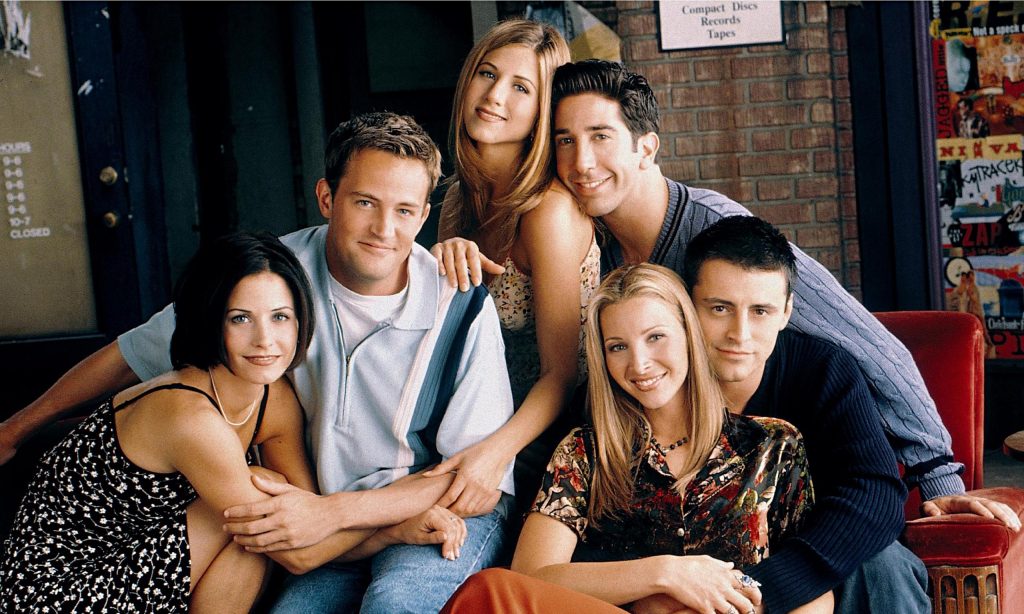
Main cast of Friends. Photo courtesy of NBC Networks
Many could see the future of delivering media to markets as whispers of streaming started. A proof of concept, streaming test was done in 1994, but as exciting as that was, it wasn’t until the late 90s that anything resembling what we know now was possible. The technical limitations were just too great. Like a lot of what was going around at the time, hope and vision were in the discussion.
